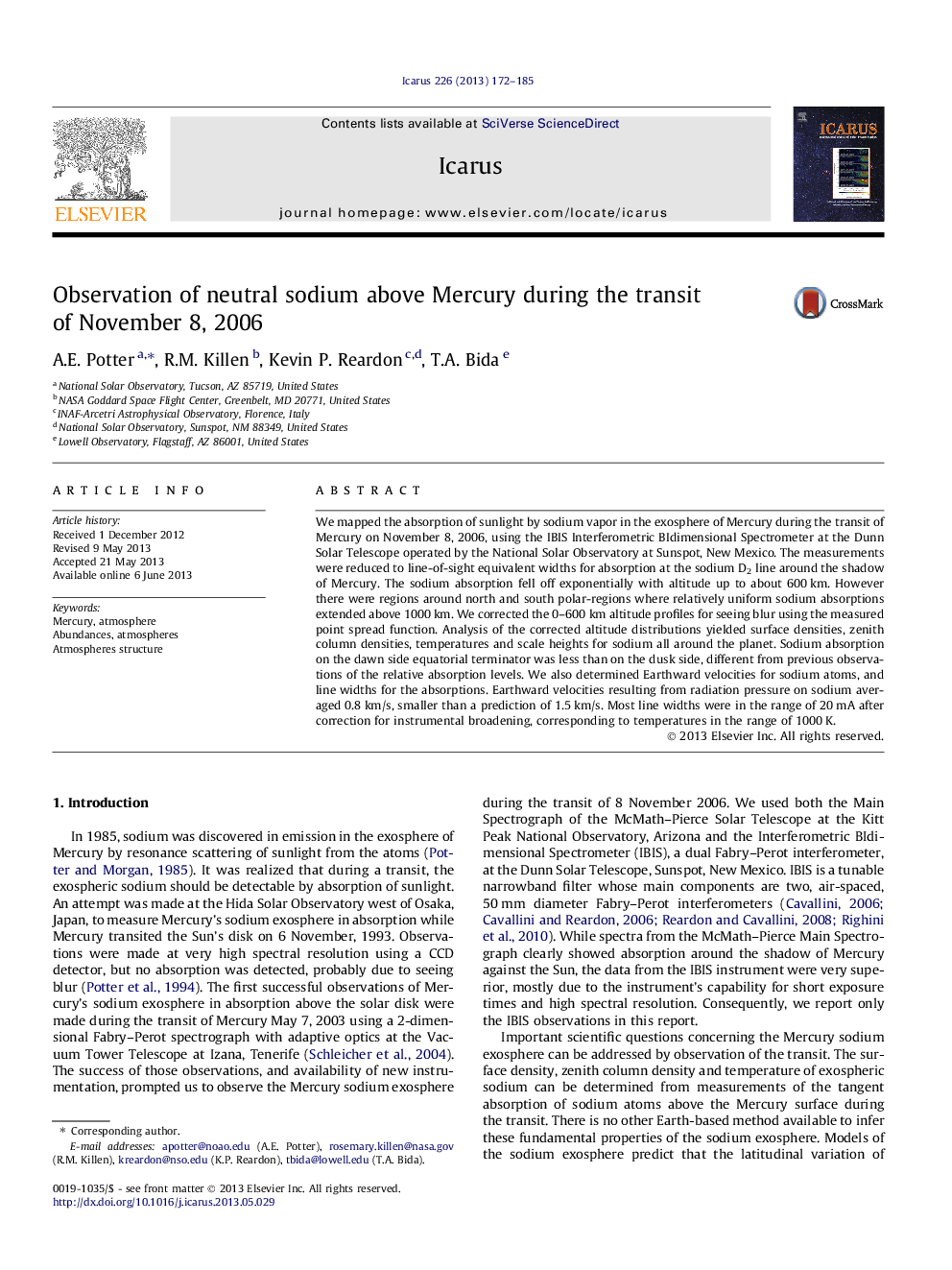| Article ID | Journal | Published Year | Pages | File Type |
|---|---|---|---|---|
| 10701293 | Icarus | 2013 | 14 Pages |
Abstract
We mapped the absorption of sunlight by sodium vapor in the exosphere of Mercury during the transit of Mercury on November 8, 2006, using the IBIS Interferometric BIdimensional Spectrometer at the Dunn Solar Telescope operated by the National Solar Observatory at Sunspot, New Mexico. The measurements were reduced to line-of-sight equivalent widths for absorption at the sodium D2 line around the shadow of Mercury. The sodium absorption fell off exponentially with altitude up to about 600Â km. However there were regions around north and south polar-regions where relatively uniform sodium absorptions extended above 1000Â km. We corrected the 0-600Â km altitude profiles for seeing blur using the measured point spread function. Analysis of the corrected altitude distributions yielded surface densities, zenith column densities, temperatures and scale heights for sodium all around the planet. Sodium absorption on the dawn side equatorial terminator was less than on the dusk side, different from previous observations of the relative absorption levels. We also determined Earthward velocities for sodium atoms, and line widths for the absorptions. Earthward velocities resulting from radiation pressure on sodium averaged 0.8Â km/s, smaller than a prediction of 1.5Â km/s. Most line widths were in the range of 20Â mA after correction for instrumental broadening, corresponding to temperatures in the range of 1000Â K.
Related Topics
Physical Sciences and Engineering
Earth and Planetary Sciences
Space and Planetary Science
Authors
A.E. Potter, R.M. Killen, Kevin P. Reardon, T.A. Bida,
